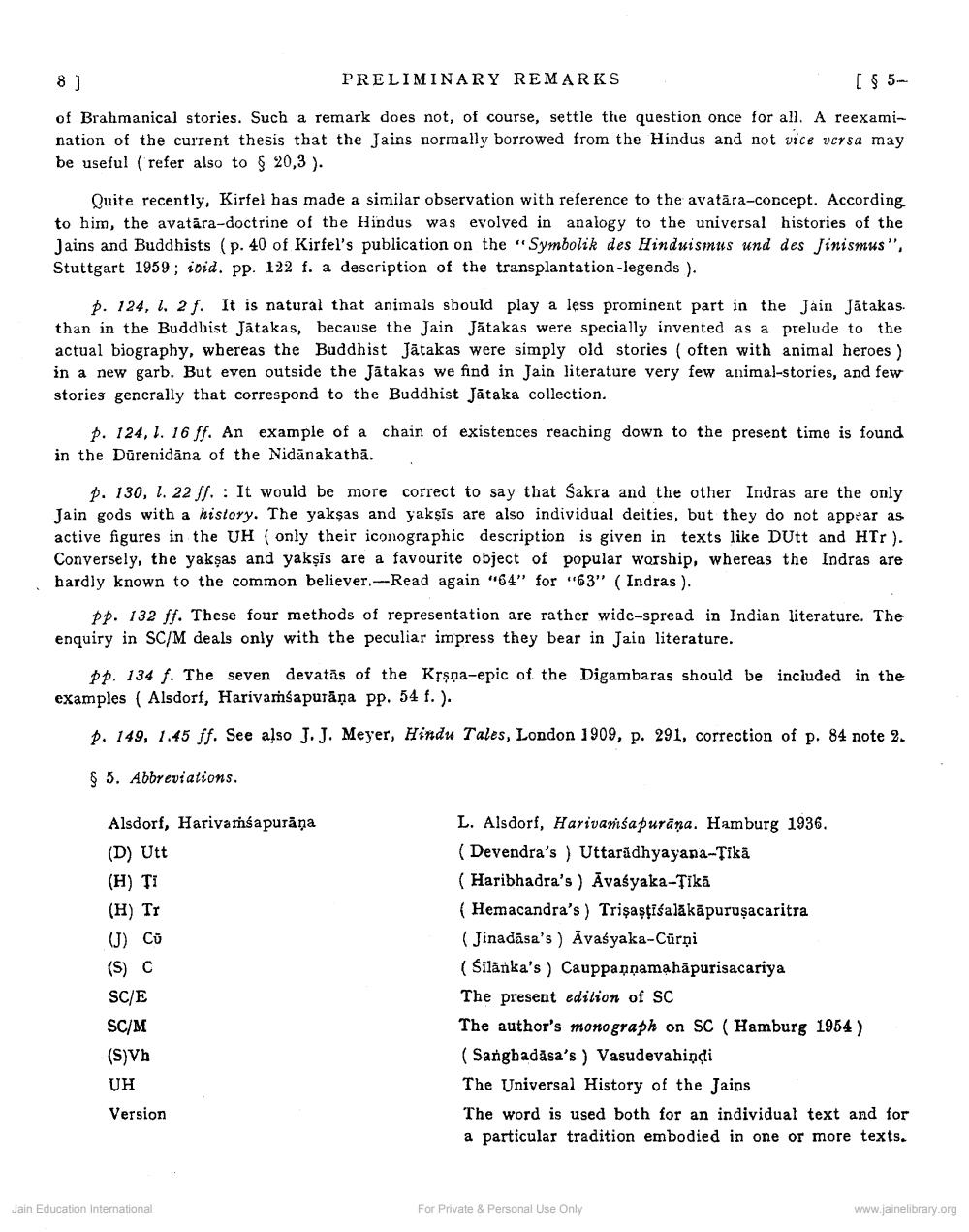________________
8]
PRELIMINARY REMARKS
[ $ 5.
of Brahmanical stories. Such a remark does not, of course, settle the question once for all. A reexamination of the current thesis that the Jains normally borrowed from the Hindus and not vice versa may be useful (refer also to $ 20,3 ).
Quite recently, Kirfel has made a similar observation with reference to the avatāra-concept. According to him, the avatāra-doctrine of the Hindus was evolved in analogy to the universal histories of the Jains and Buddhists (p. 40 of Kirfel's publication on the "Symbolik des Hinduismus und des Jinismus", Stuttgart 1959; ibid. pp. 122 f. a description of the transplantation -legends ).
p. 124, 1, 2 f. It is natural that animals should play a less prominent part in the Jain Jātakas. than in the Buddhist Jätakas, because the Jain Jātakas were specially invented as a prelude to the actual biography, whereas the Buddhist Jātakas were simply old stories (often with animal heroes) in a new garb. But even outside the Jatakas we find in Jain literature very few animal-stories, and few stories generally that correspond to the Buddhist Jätaka collection.
P. 124, 1. 16 ff. An example of a chain of existences reaching down to the present time is found in the Dürenidāna of the Nidänakathā.
p. 130, I. 22 ff. : It would be more correct to say that Sakra and the other Indras are the only Jain gods with a history. The yakşas and yakşīs are also individual deities, but they do not appear as active figures in the UH ( only their iconographic description is given in texts like Dutt and HTT). Conversely, the yakşas and yaksis are a favourite object of popular worship, whereas the Indras are hardly known to the common believer.---Read again "64" for "63" ( Indras ).
pp. 132 ff. These four methods of representation are rather wide-spread in Indian literature. The enquiry in SC/M deals only with the peculiar impress they bear in Jain literature.
pp. 134 f. The seven devatās of the Kļşņa-epic of the Digambaras should be included in the examples ( Alsdorf, Harivamsaputāna pp. 54 f.).
p. 149, 1.45 ff. See also J. J. Meyer, Hindu Tales, London 1909, p. 291, correction of p. 84 note 2.
$ 5. Abbreviations.
Alsdorf, Hariyamśapurāņa (D) Utt (H) TI (H) TI
(J) CÜ (s) C
L. Alsdorf, Harivansapurana. Hamburg 1936. (Devendra's ) Uttaradhyayana-Tika (Haribhadra's ) Āvaśyaka-Tikā (Hemacandra's ) Trişașțiśalākāpuruşacaritra (Jinadāsa's ) Āvaśyaka-Cūrņi (Silänka's ) Cauppannaməhāpurisacariya The present edition of SC The author's monograph on SC (Hamburg 1954 ) ( Sanghadāsa's ) Vasudevahiņời The Universal History of the Jains The word is used both for an individual text and for a particular tradition embodied in one or more texts.
SC/E SC/M (S)Vh UH Version
Jain Education International
For Private & Personal Use Only
www.jainelibrary.org




